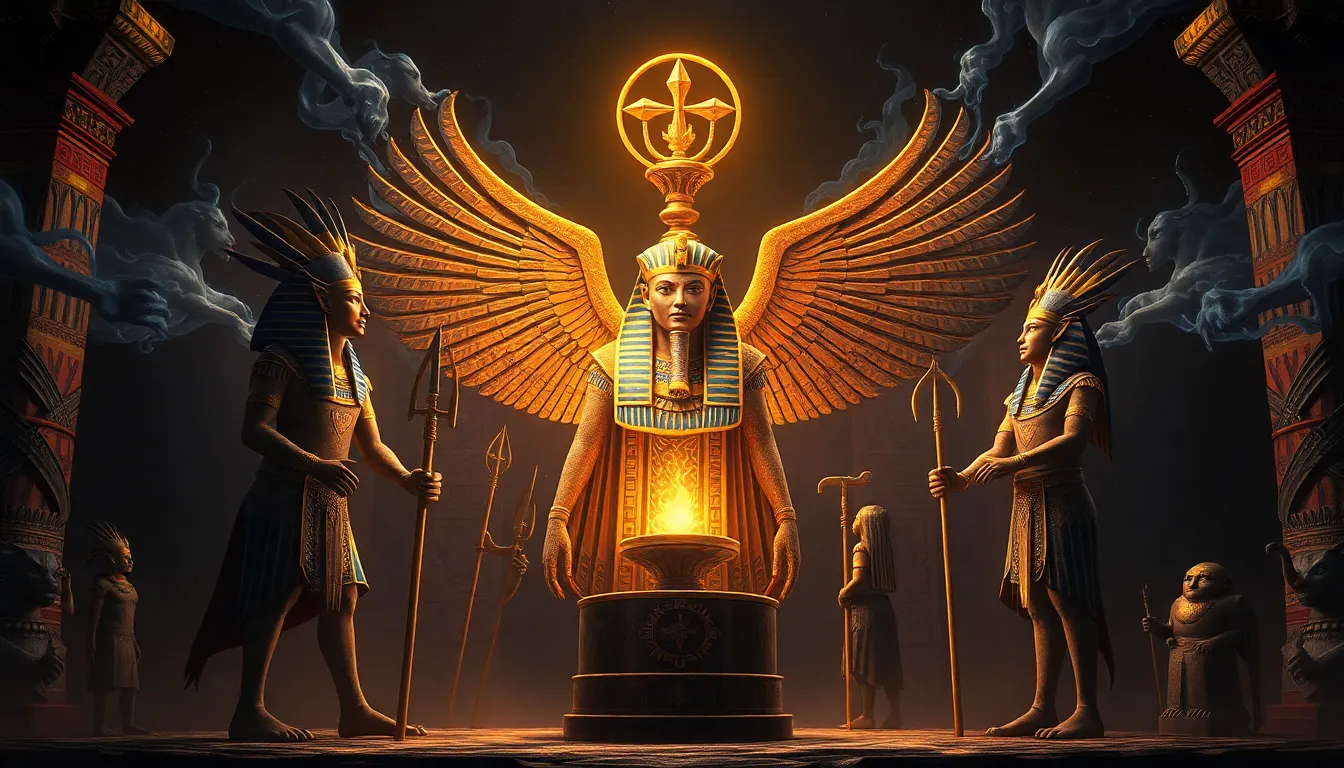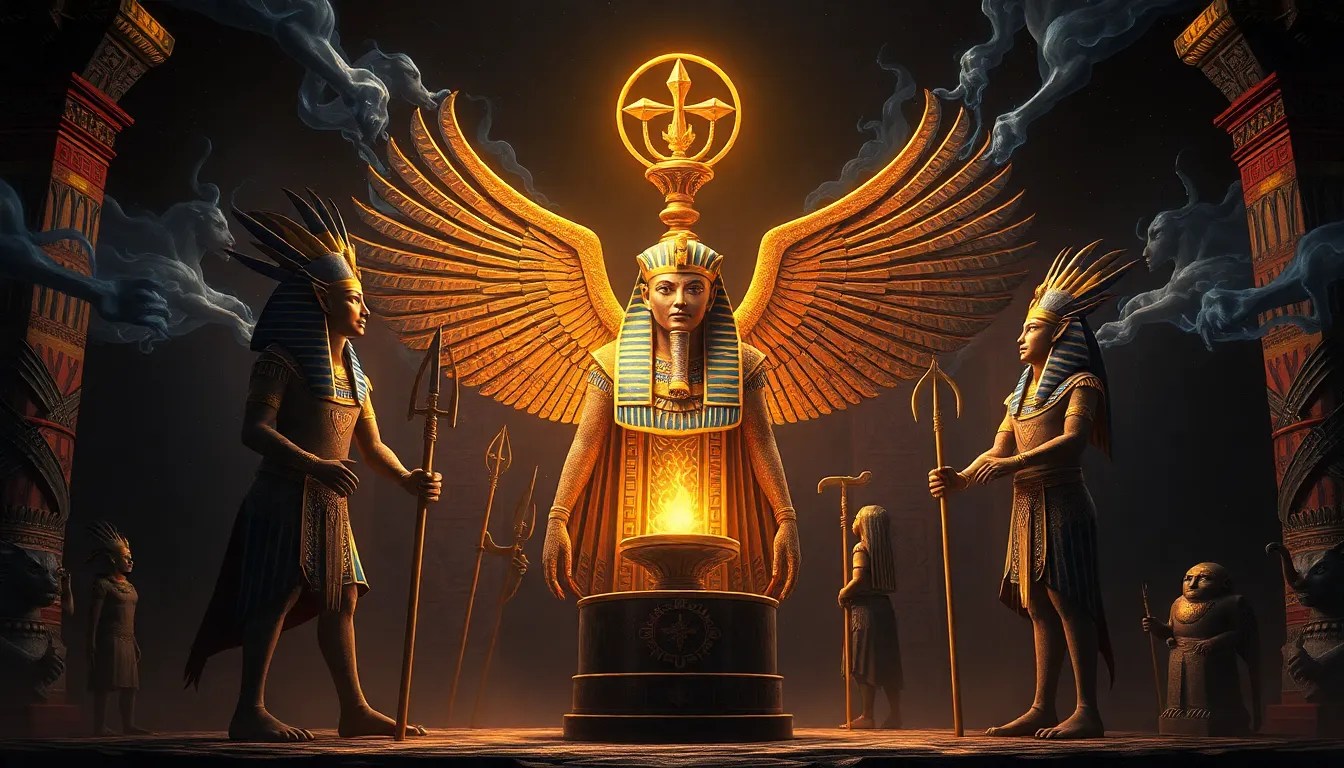The Sacred Order: Understanding the Hierarchical Roles of Egyptian Gods
I. Introduction
Ancient Egyptian religion was a complex system of beliefs and practices centered around a vast pantheon of deities, each playing specific roles in the natural and supernatural worlds. The ancient Egyptians viewed their gods as integral to their existence, embedding their worship deeply into their daily lives and governance.
At the core of this religious system was a hierarchical structure that defined the relationships and importance of each deity. This hierarchy not only influenced religious practices but also reflected the broader societal values and political structures of ancient Egypt.
This article aims to explore the hierarchical roles of Egyptian gods, shedding light on their characteristics, the supreme deities, major gods and goddesses, lesser deities, and the overarching structure of the pantheon.
II. The Nature of Egyptian Deities
A. Characteristics of Egyptian Gods
Egyptian gods were often characterized by their power over specific aspects of life and nature. They were believed to be immortal, possessing abilities far beyond human comprehension. Each god had distinct attributes, symbols, and stories associated with them, which distinguished their roles within the pantheon.
B. Anthropomorphism and Animal Symbolism
Many Egyptian deities were depicted in anthropomorphic forms, combining human characteristics with those of animals. This representation served to symbolize their powers and domains:
- Horus: Often depicted as a falcon or a man with a falcon head, symbolizing kingship and the sky.
- Set: Represented as a man with the head of a mythical creature, embodying chaos and desert.
- Isis: Typically shown as a woman with a throne-shaped crown, symbolizing motherhood and fertility.
C. Duality of Creation and Destruction
Egyptian mythology embraced the duality of creation and destruction, where gods could embody both aspects. For instance, while Osiris was a god of resurrection and renewal, Set represented chaos and destruction. This duality was essential for maintaining balance in the cosmos.
III. The Supreme Deities
A. Ra: The Sun God and Creator
Ra was the supreme god of the sun and one of the most important deities in ancient Egypt. He was believed to travel across the sky in his solar boat, bringing light and life to the world. Ra was often depicted with a falcon head crowned with a sun disk.
B. Osiris: God of the Afterlife and Resurrection
Osiris held dominion over the afterlife and was associated with resurrection. His myth revolved around his death and rebirth, signifying the cycle of life. He was often depicted as a mummified king, symbolizing eternal life.
C. Isis: The Mother Goddess and Protector
Isis was revered as the mother goddess, protector of the pharaohs, and a symbol of fertility and motherhood. She played a crucial role in the resurrection of Osiris and was often depicted with a throne-shaped crown and an ankh, symbolizing life.
IV. The Major Gods and Goddesses
A. Horus: The Sky God and Avenger
Horus was the son of Osiris and Isis, embodying kingship and protection. He was often associated with the sky and depicted as a falcon or a man with a falcon head. Horus was believed to be the protector of the pharaohs and the embodiment of divine kingship.
B. Set: The God of Chaos and Desert
Set was known as the god of chaos, storms, and the desert. He represented the forces that opposed order and harmony, often portrayed as an adversary to Osiris and Horus. His complex character reflects the ancient Egyptians’ understanding of the chaotic elements in nature.
C. Anubis: The God of Mummification and the Afterlife
Anubis, depicted as a jackal or a man with a jackal head, was the god associated with mummification and the protection of the dead. He played a vital role in the funeral rites, guiding souls to the afterlife and overseeing the embalming process.
V. Lesser Deities and Their Roles
A. The Role of Local Deities in Daily Life
In addition to the major gods, ancient Egyptians worshipped numerous local deities who were thought to protect specific regions or cities. These gods often had a direct influence on the daily lives of the people.
B. The Influence of Household Gods
Household gods, known as “genii,” were revered for their protective qualities. Families would often worship deities such as Bes, the protector of the home and childbirth, ensuring safety and well-being within their households.
C. The Importance of Nature Deities
Nature deities were crucial for agriculture and the environment. Gods like Hapi, the god of the Nile, were essential for ensuring fertile lands and bountiful harvests, reflecting the agricultural dependence of ancient Egyptian society.
VI. The Hierarchical Structure of the Pantheon
A. The Concept of Divine Kingship
The concept of divine kingship integrated the gods into the political structure of ancient Egypt. Pharaohs were considered gods on earth, intermediaries between the gods and the people, reinforcing their authority and divine right to rule.
B. Interactions Between Gods and Their Followers
The relationship between gods and their followers was characterized by rituals, offerings, and prayers. Temples served as hubs of worship, where priests performed ceremonies to appease the deities and secure their favor.
C. How Hierarchies Reflect Societal Structure
The hierarchical structure of the pantheon mirrored the societal hierarchy in ancient Egypt, with the pharaoh at the top, followed by nobles, priests, and common people. This structure reinforced the belief that order and stability were essential for a prosperous society.
VII. The Evolution of the Pantheon
A. Historical Changes in Worship and Deification
The worship of Egyptian gods evolved over time, influenced by various dynasties and cultural shifts. New gods emerged, and existing ones were reinterpreted to reflect changing values and beliefs.
B. Influence of Political Changes on the Divine Order
Political changes, such as conquests and the unification of Upper and Lower Egypt, led to the merging of deities and the establishment of new religious practices. The introduction of foreign gods also influenced the traditional pantheon.
C. Syncretism: Merging of Deities Over Time
Syncretism played a significant role in the evolution of the pantheon, as gods were combined or associated with one another to create new forms of worship. For example, the fusion of Ra and Amun produced Amun-Ra, a powerful deity embodying both creation and kingship.
VIII. Conclusion
The ancient Egyptian pantheon is rich in mythology, reflecting the society’s values, beliefs, and understanding of the world. From the supreme deities like Ra, Osiris, and Isis to the lesser-known gods of local importance, each deity contributed to the intricate tapestry of religious life in ancient Egypt.
Understanding the hierarchical roles of these gods offers insight into how the ancient Egyptians navigated their existence, seeking divine favor and maintaining cosmic order. The legacy of Egyptian gods continues to influence modern culture and religion, inviting further study and exploration into their fascinating world.




